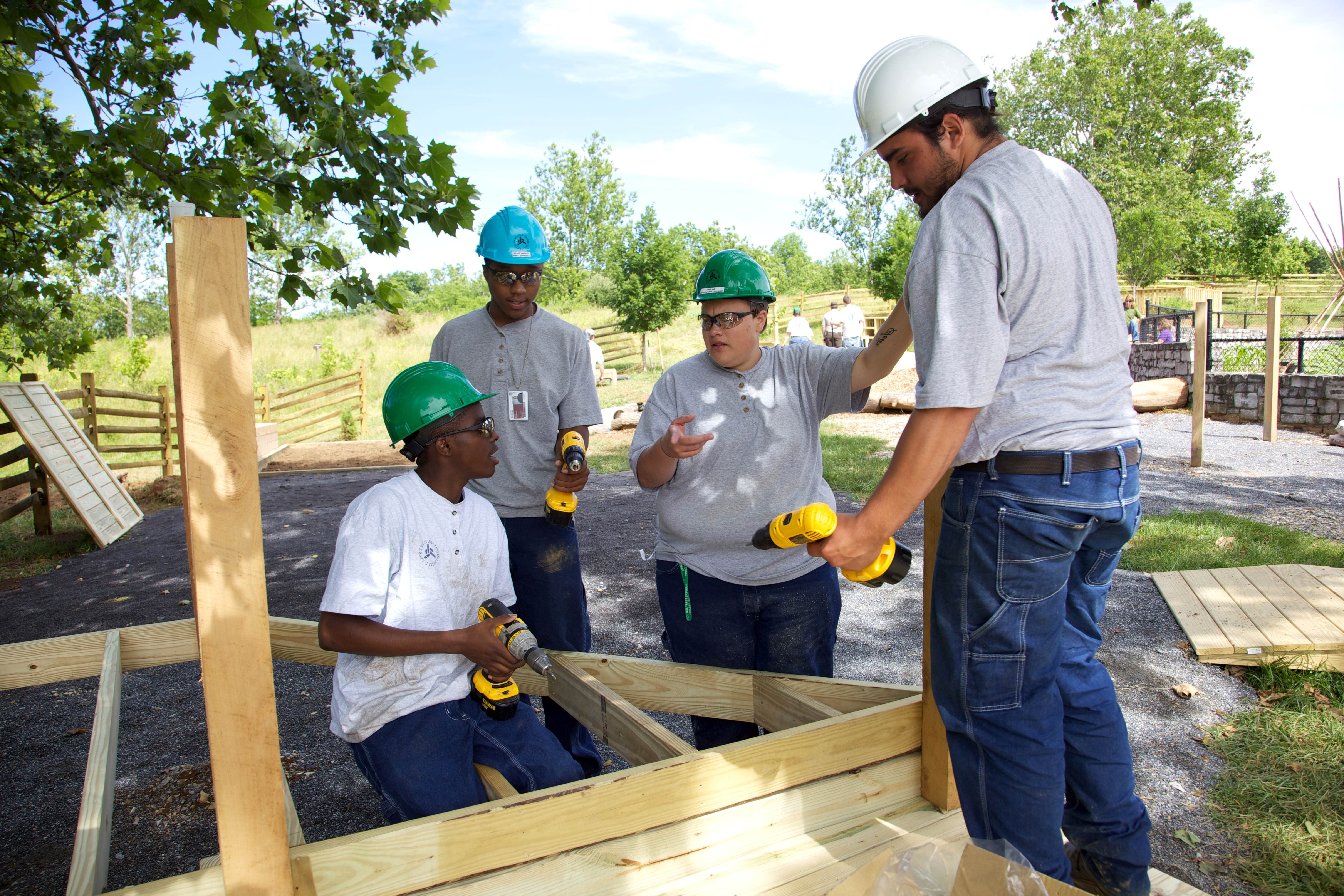Do it together architecture
Contents |
[edit] Introduction
The acronym for do it yourself - DIY - is used to describe the concept of self-repairing, building or resolving an assortment of issues (including those that are not construction related). It is generally understood to mean the task has been addressed without requiring the assistance of professionals.
In direct contrast to this concept, the term do it together - or DIT - has been introduced in conjunction with architecture and communal collaboration, particularly in the area of residential buildings.
[edit] Origins
The term DIT is borrowed from the language of cohousing. Cohousing is a method of living that has become established in several countries around the world. Created and run by residents, cohousing developments are communities where people not only know their neighbours but actively manage their neighbourhood alongside them.
The idea of DIT architecture builds on the cohousing concept to form a collective approach to the design and construction of neighbourhoods.
[edit] The purpose of DIT architecture
In DIT architecture, not only does the construction process become a form of community building (both literally and figuratively), it also becomes part of a training method for those interested in learning new skills and participating in the programme. In addition to encouraging residents, DIT architecture may involve members of non-profit organisations, volunteers and unemployed people from the community.
Also referred to as a type of open-source architecture or crowd sourced architecture, DIT architecture involves people who may be outside the traditional construction professions, but who are invested in the outcome of the project. Ideally, they are motivated to share any applicable skills and infuse the “co-created” outcome with their various social experiences and cultural backgrounds.
[edit] Changing the dynamics
As an emerging ideology, DIT architecture is a by product of the crowd funding era. It breaks established business conventions associated with client-architect relationships and changes the dynamic of who controls the process.
Instead of being driven by decisions dictated by an external consultant, the participants in a DIT architecture arrangement take on key responsibilities, including decision making, materials sourcing and even the building process itself. And while an architect may provide a baseline starting point, it is up to the collaborative community to take the project through to completion - and then live in it and continue adding to it.
DIT architecture is intended to have a less formal, more “human” sensibility, with the purpose of developing a place that projects a sense of togetherness both in its creation and its use.
[edit] Related articles on Designing Buildings Wiki
Featured articles and news
RTPI leader to become new CIOB Chief Executive Officer
Dr Victoria Hills MRTPI, FICE to take over after Caroline Gumble’s departure.
Social and affordable housing, a long term plan for delivery
The “Delivering a Decade of Renewal for Social and Affordable Housing” strategy sets out future path.
A change to adoptive architecture
Effects of global weather warming on architectural detailing, material choice and human interaction.
The proposed publicly owned and backed subsidiary of Homes England, to facilitate new homes.
How big is the problem and what can we do to mitigate the effects?
Overheating guidance and tools for building designers
A number of cool guides to help with the heat.
The UK's Modern Industrial Strategy: A 10 year plan
Previous consultation criticism, current key elements and general support with some persisting reservations.
Building Safety Regulator reforms
New roles, new staff and a new fast track service pave the way for a single construction regulator.
Architectural Technologist CPDs and Communications
CIAT CPD… and how you can do it!
Cooling centres and cool spaces
Managing extreme heat in cities by directing the public to places for heat stress relief and water sources.
Winter gardens: A brief history and warm variations
Extending the season with glass in different forms and terms.
Restoring Great Yarmouth's Winter Gardens
Transforming one of the least sustainable constructions imaginable.
Construction Skills Mission Board launch sector drive
Newly formed government and industry collaboration set strategy for recruiting an additional 100,000 construction workers a year.
New Architects Code comes into effect in September 2025
ARB Architects Code of Conduct and Practice available with ongoing consultation regarding guidance.
Welsh Skills Body (Medr) launches ambitious plan
The new skills body brings together funding and regulation of tertiary education and research for the devolved nation.
Paul Gandy FCIOB announced as next CIOB President
Former Tilbury Douglas CEO takes helm.
UK Infrastructure: A 10 Year Strategy. In brief with reactions
With the National Infrastructure and Service Transformation Authority (NISTA).























